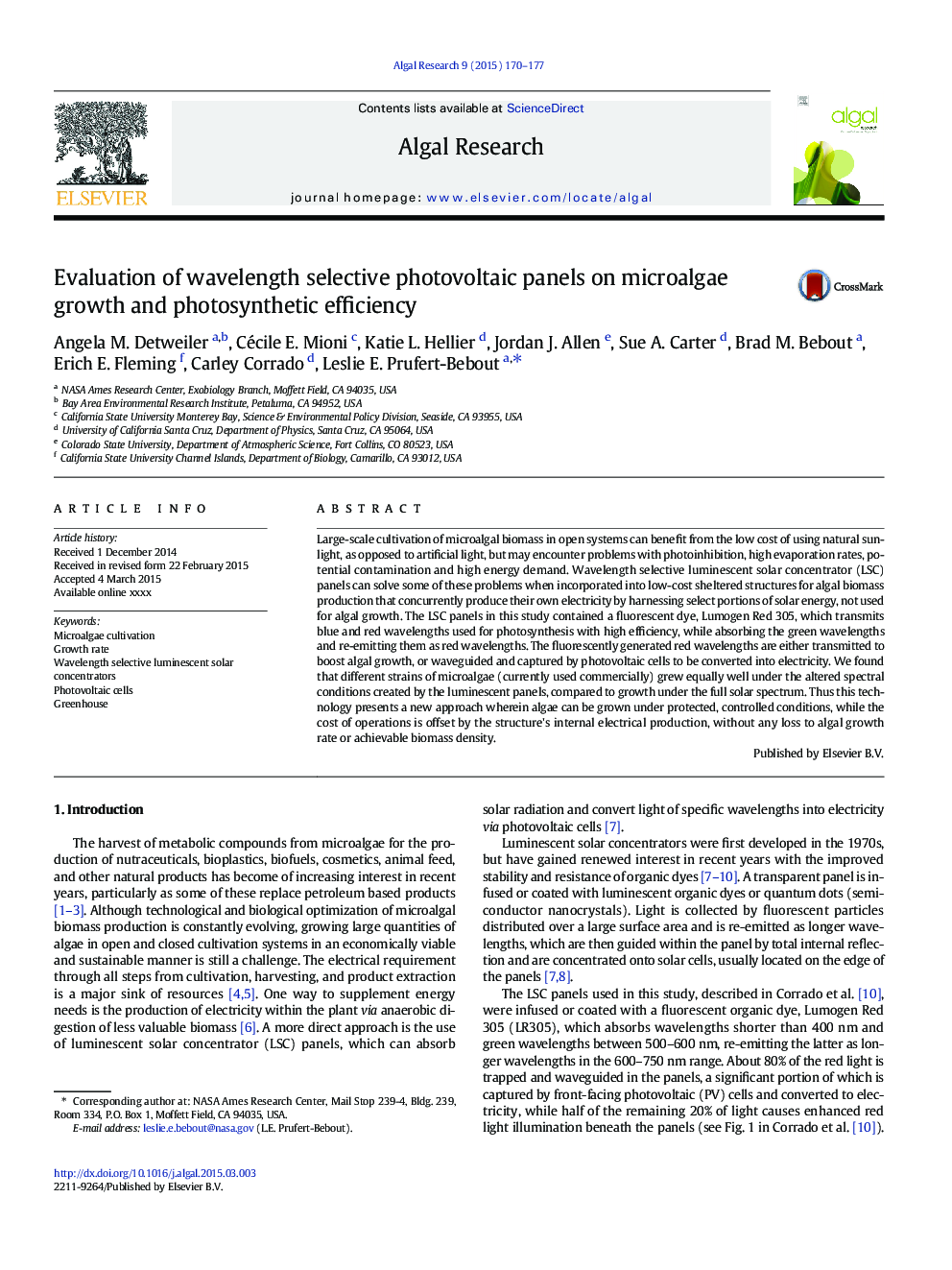| Article ID | Journal | Published Year | Pages | File Type |
|---|---|---|---|---|
| 8088335 | Algal Research | 2015 | 8 Pages |
Abstract
Large-scale cultivation of microalgal biomass in open systems can benefit from the low cost of using natural sunlight, as opposed to artificial light, but may encounter problems with photoinhibition, high evaporation rates, potential contamination and high energy demand. Wavelength selective luminescent solar concentrator (LSC) panels can solve some of these problems when incorporated into low-cost sheltered structures for algal biomass production that concurrently produce their own electricity by harnessing select portions of solar energy, not used for algal growth. The LSC panels in this study contained a fluorescent dye, Lumogen Red 305, which transmits blue and red wavelengths used for photosynthesis with high efficiency, while absorbing the green wavelengths and re-emitting them as red wavelengths. The fluorescently generated red wavelengths are either transmitted to boost algal growth, or waveguided and captured by photovoltaic cells to be converted into electricity. We found that different strains of microalgae (currently used commercially) grew equally well under the altered spectral conditions created by the luminescent panels, compared to growth under the full solar spectrum. Thus this technology presents a new approach wherein algae can be grown under protected, controlled conditions, while the cost of operations is offset by the structure's internal electrical production, without any loss to algal growth rate or achievable biomass density.
Related Topics
Physical Sciences and Engineering
Energy
Renewable Energy, Sustainability and the Environment
Authors
Angela M. Detweiler, Cécile E. Mioni, Katie L. Hellier, Jordan J. Allen, Sue A. Carter, Brad M. Bebout, Erich E. Fleming, Carley Corrado, Leslie E. Prufert-Bebout,
